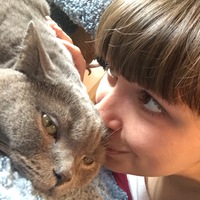Я только раз видала рукопашный,
Раз наяву. И тысячу - во сне.
Кто говорит, что на войне не страшно,
Тот ничего не знает о войне.
⠀
Юлия Друнина
1943
⠀
27 января 1944 - день полного освобождения Ленинграда от фашистской блокады. 900 огненных дней и ночей город жил под обстрелом и бомбардировками, но не сдался. ⠀
Однажды мне довелось побывать в местах, где город сопротивлялся блокаде. На рубежах битвы за Ленинград в 1941-1944 годов был построен комплекс мемориальных сооружений, чтобы увековечить память его героических защитников. ⠀
Две железобетонные арки -"Разорванное кольцо" - символизируют кольцо блокады, а разрыв между ними — Дорогу жизни. На площадке под арками в бетоне можно увидеть следы протектора машин. ⠀
Другой монумент - это "Цветок жизни", памятник, созданный в память о погибших детях блокадного Ленинграда. И отдельно на больших гранитных плитах написаны как будто детским почерком записки из дневника девочки, пережившей блокаду Ленинграда.
⠀
Посетить эти места и видеть эти памятники своими глазами это не просто съездить на экскурсию и вспомнить школьные уроки истории. Это все пронимает настолько глубоко, что понять, что пришлось пережить людям в городе, окруженном блокадным кольцом, невозможно. Это был настоящий подвиг, который может оценить только тот, кто его совершил. ⠀
Какое счастье видеть, как сегодня Петербург живет и развивается. Пусть мир здесь будет всегда!
Раз наяву. И тысячу - во сне.
Кто говорит, что на войне не страшно,
Тот ничего не знает о войне.
⠀
Юлия Друнина
1943
⠀
27 января 1944 - день полного освобождения Ленинграда от фашистской блокады. 900 огненных дней и ночей город жил под обстрелом и бомбардировками, но не сдался. ⠀
Однажды мне довелось побывать в местах, где город сопротивлялся блокаде. На рубежах битвы за Ленинград в 1941-1944 годов был построен комплекс мемориальных сооружений, чтобы увековечить память его героических защитников. ⠀
Две железобетонные арки -"Разорванное кольцо" - символизируют кольцо блокады, а разрыв между ними — Дорогу жизни. На площадке под арками в бетоне можно увидеть следы протектора машин. ⠀
Другой монумент - это "Цветок жизни", памятник, созданный в память о погибших детях блокадного Ленинграда. И отдельно на больших гранитных плитах написаны как будто детским почерком записки из дневника девочки, пережившей блокаду Ленинграда.
⠀
Посетить эти места и видеть эти памятники своими глазами это не просто съездить на экскурсию и вспомнить школьные уроки истории. Это все пронимает настолько глубоко, что понять, что пришлось пережить людям в городе, окруженном блокадным кольцом, невозможно. Это был настоящий подвиг, который может оценить только тот, кто его совершил. ⠀
Какое счастье видеть, как сегодня Петербург живет и развивается. Пусть мир здесь будет всегда!
I only saw melee
In reality. And a thousand in a dream.
Who says war is not scary
He does not know anything about the war.
⠀
Julia Drunina
1943
⠀
January 27, 1944 is the day of the complete liberation of Leningrad from the fascist blockade. 900 fiery days and nights the city lived under shelling and bombing, but did not give up. ⠀
Once I happened to visit places where the city resisted the blockade. At the borders of the battle of Leningrad in 1941-1944, a complex of memorial structures was built to perpetuate the memory of his heroic defenders. ⠀
Two reinforced concrete arches - “Torn Ring” - symbolize the blockade ring, and the gap between them - the Road of Life. On the site under the arches in concrete, you can see traces of the tread of cars. ⠀
Another monument is the "Flower of Life", a monument created in memory of the dead children of the besieged Leningrad. And separately on large granite slabs are written, as if in children's handwriting, notes from the diary of a girl who survived the siege of Leningrad.
⠀
To visit these places and see these monuments with your own eyes is not just to go on an excursion and remember school history lessons. It all penetrates so deeply that it is impossible to understand what people had to go through in a city surrounded by a blockade ring. It was a real feat that can only be appreciated by the one who performed it. ⠀
What a blessing to see how Petersburg lives and develops today. May the world be here forever!
In reality. And a thousand in a dream.
Who says war is not scary
He does not know anything about the war.
⠀
Julia Drunina
1943
⠀
January 27, 1944 is the day of the complete liberation of Leningrad from the fascist blockade. 900 fiery days and nights the city lived under shelling and bombing, but did not give up. ⠀
Once I happened to visit places where the city resisted the blockade. At the borders of the battle of Leningrad in 1941-1944, a complex of memorial structures was built to perpetuate the memory of his heroic defenders. ⠀
Two reinforced concrete arches - “Torn Ring” - symbolize the blockade ring, and the gap between them - the Road of Life. On the site under the arches in concrete, you can see traces of the tread of cars. ⠀
Another monument is the "Flower of Life", a monument created in memory of the dead children of the besieged Leningrad. And separately on large granite slabs are written, as if in children's handwriting, notes from the diary of a girl who survived the siege of Leningrad.
⠀
To visit these places and see these monuments with your own eyes is not just to go on an excursion and remember school history lessons. It all penetrates so deeply that it is impossible to understand what people had to go through in a city surrounded by a blockade ring. It was a real feat that can only be appreciated by the one who performed it. ⠀
What a blessing to see how Petersburg lives and develops today. May the world be here forever!

У записи 13 лайков,
1 репостов,
317 просмотров.
1 репостов,
317 просмотров.
Эту запись оставил(а) на своей стене Юлия Федорова
































